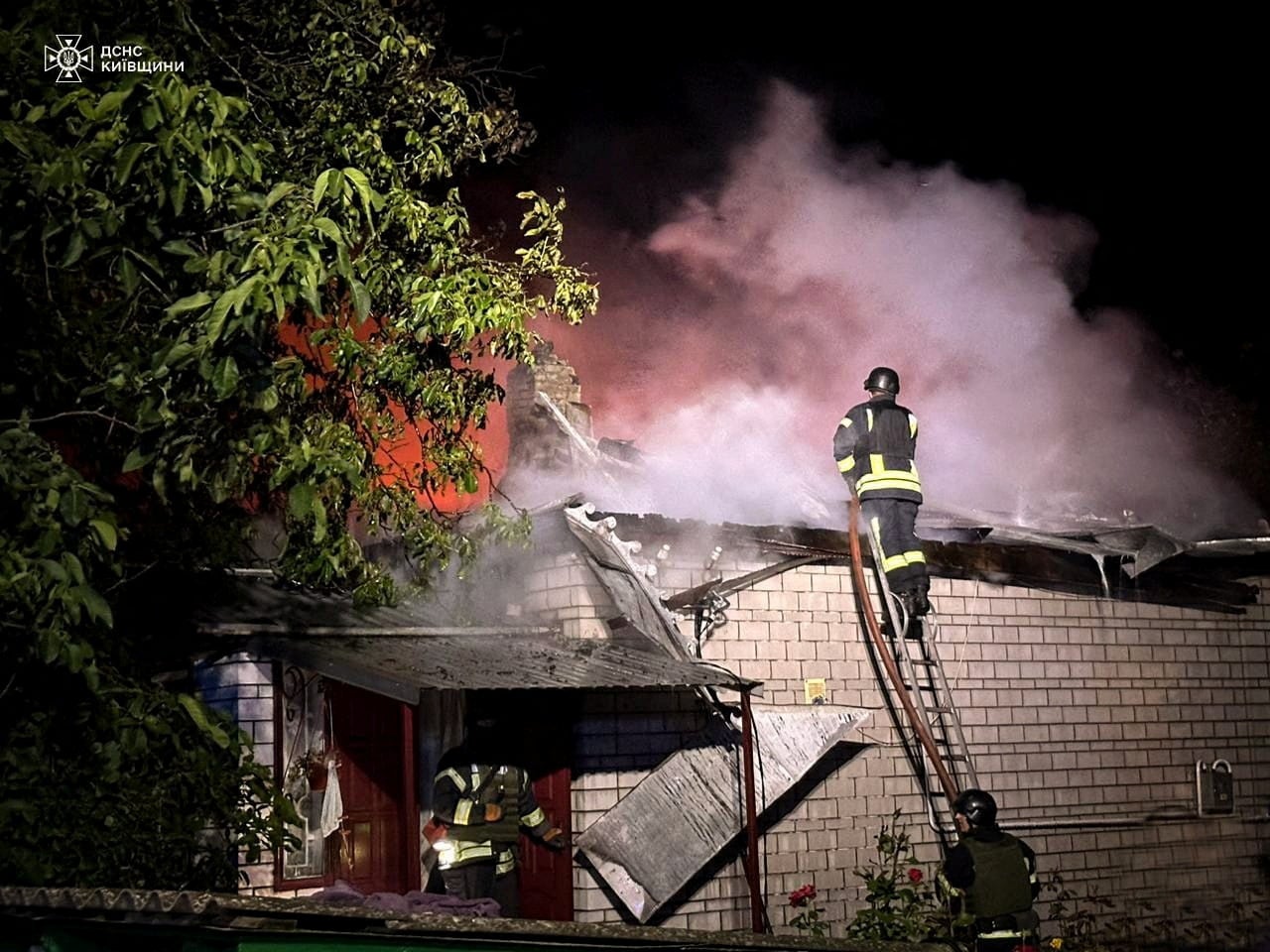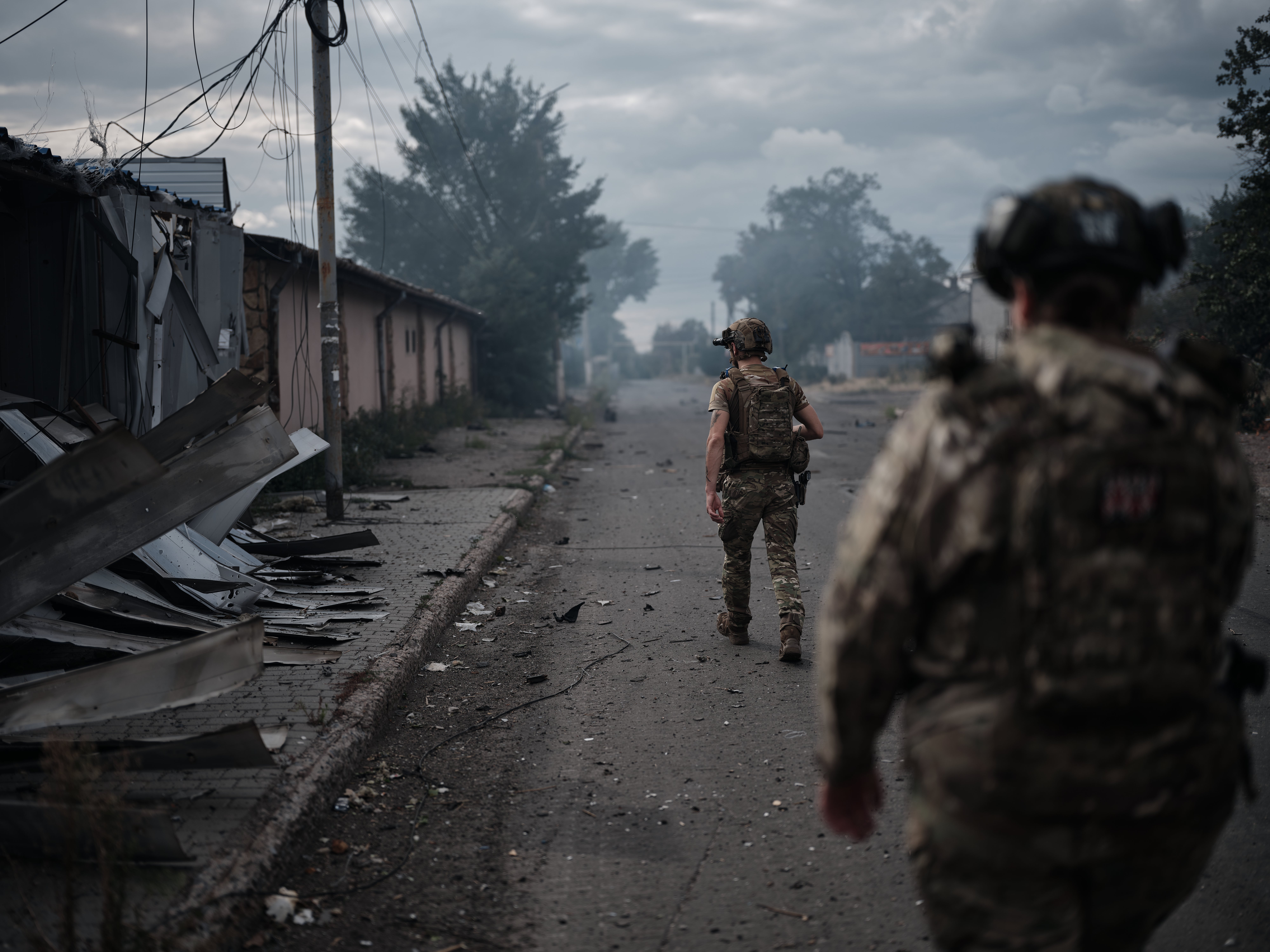Ukraine repels massive drone attack by Putin’s forces on Kyiv and across country
Ukraine’s air force say they shot down all 89 Russian drones in total – including more than 40 around Kyiv

Support truly
independent journalism
Our mission is to deliver unbiased, fact-based reporting that holds power to account and exposes the truth.
Whether $5 or $50, every contribution counts.
Support us to deliver journalism without an agenda.

Louise Thomas
Editor
Ukraine’s air force says it has stopped one of Russia’s largest aerial attacks of the war, shooting down 89 drones launched at Kyiv and other regions.
The attack, which comes more than two years after Russia’s invasion began, primarily targeted the Ukrainian capital and the surrounding regions. More than 40 drones were fired at Kyiv and the surrounding area, making it the most extensive such assault on the capital this year.
Military spy agency spokesperson Andriy Yusov said in televised remarks that Russia had used a “significant” number of decoy drones that were not loaded with explosives to try to deplete Ukraine’s air defences and also identify their locations.
Kyiv, which has repeatedly appealed to Western allies to supply more air defences to fight off near-daily drone and missile assaults, conceals the locations of its air defence units.
The latest drone attack was the seventh conducted in the capital in July, and “one of the most massive attacks by Shahed-131/136 strike drones”, the Ukrainian airforce said.
Some 11,500 residents sheltered for safety in metro stations as the drones came in several waves from “all possible directions”.
There was limited damage to civilian and critical infrastructure, but debris damaged the roofs, windows and facades of 13 private residences in the region, according to local authorities.
Belarusian Hajun, an opposition group that monitors military activity in Belarus, said that at least five Russian drones had flown into Belarusian airspace during the attack and that Minsk had scrambled a fighter jet in the evening.
Minsk, a close Kremlin ally, has not publicly commented on any such incident. Ukrainian military analysts have said Russia may fly drones via Belarus to minimise their flight time in Ukrainian airspace – and exposure to air defences – before they strike.

It comes as Ukrainian forces struck a Russian storage facility for weapons and military equipment in the Western region of Kursk.
Kursk is located 62 miles northeast of the Ukrainian border and 435 miles from Odesa, where Ukraine’s navy is headquartered.
The military said it was working to assess the damage inflicted from the latest in a series of strikes by Kyiv in that area. Russian air defences were engaged to counter the attack but explosions were visible at the target locations.
Russia’s defence ministry said it had destroyed one incoming drone and a Ukrainian Neptune-guided missile over the Kursk region. Some 18 more drones over four other Russian regions and the Russian-occupied Crimean peninsula were shot down, according to the ministry.

Meanwhile, Russia has begun a third round of drills with tactical nuclear weapons, as part of an intimidation strategy to limit support for Ukraine from Western allies.
The drills will feature units of the central and southern military districts armed with Iskander short-range missiles, according to Russian officials. They will practise receiving nuclear weapons from storage and deploying them to designated launch areas.
The manoeuvres will also include air force units that will arm their warplanes with nuclear weapons and perform patrol flights.
Tactical nuclear weapons include bombs, warheads for short-range missiles and artillery munitions and are meant for use on a battlefield.
They are typically far less powerful than strategic weapons – massive warheads that arm intercontinental ballistic missiles (ICBMs) and are intended to obliterate entire cities.
The previous two rounds of the manoeuvres were held in May and June, conducted jointly with the armed forces of Belarus.
This comes as Putin attempts to drive recruitment in the armed forces by doubling upfront payments for volunteers to fight the war.
All Russians who sign a contract with the army will now receive an upfront payment of 400,000 roubles (£3,624). The presidential decree also recommends that regional authorities match this payment from their budgets with at least the same amount. The yearly salary for the first year of service has also increased to 3.25m roubles (£29,447).
Russia continues to haemorrhage soldiers on the front line, and have now sustained an estimated 550,000 casualties since its invasion of Ukraine.
Moscow officials say about 190,000 people have volunteered so far this year to fight in Ukraine, compared with 490,000 contracts signed in 2023.
Subscribe to Independent Premium to bookmark this article
Want to bookmark your favourite articles and stories to read or reference later? Start your Independent Premium subscription today.
Join our commenting forum
Join thought-provoking conversations, follow other Independent readers and see their replies
Comments